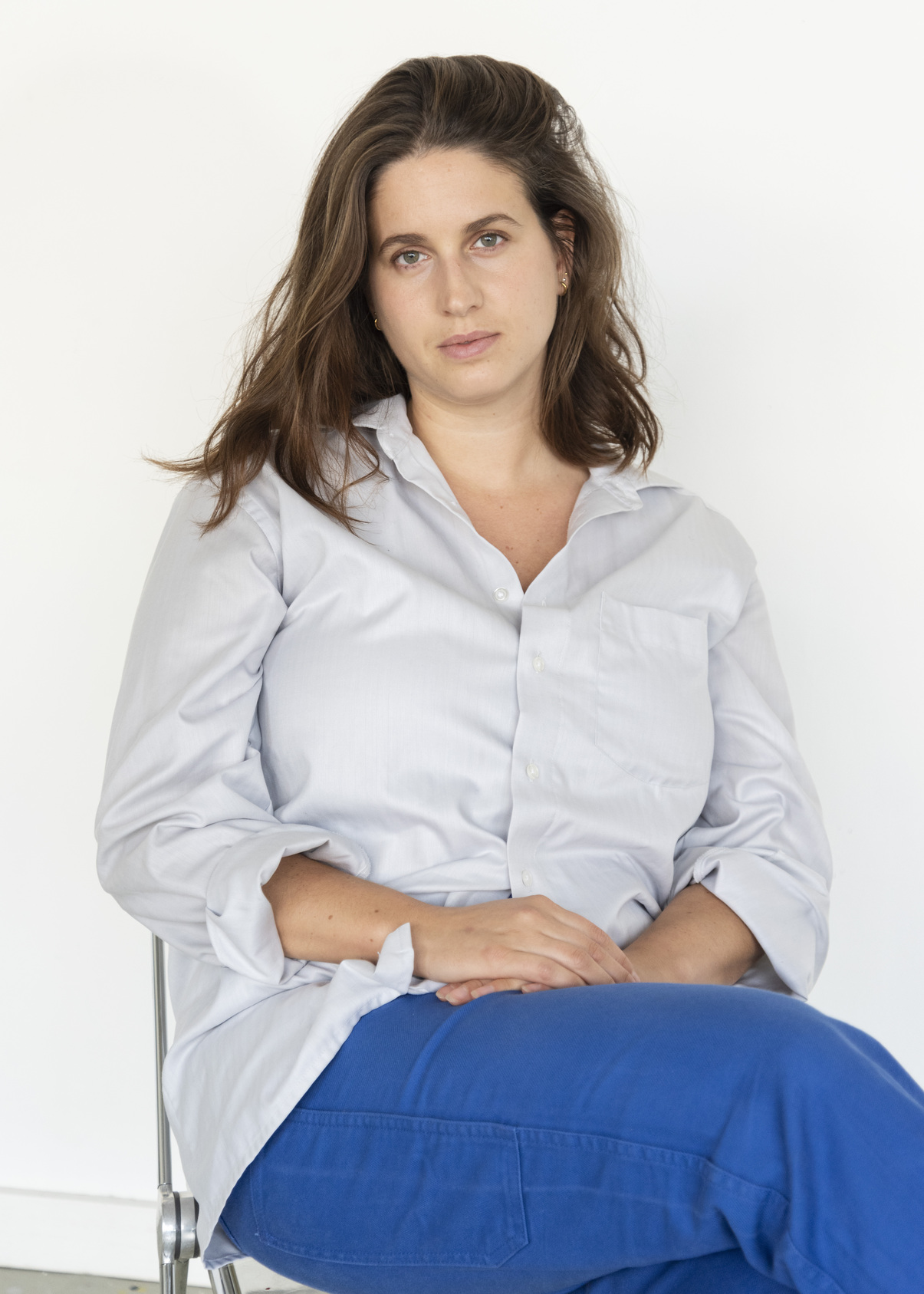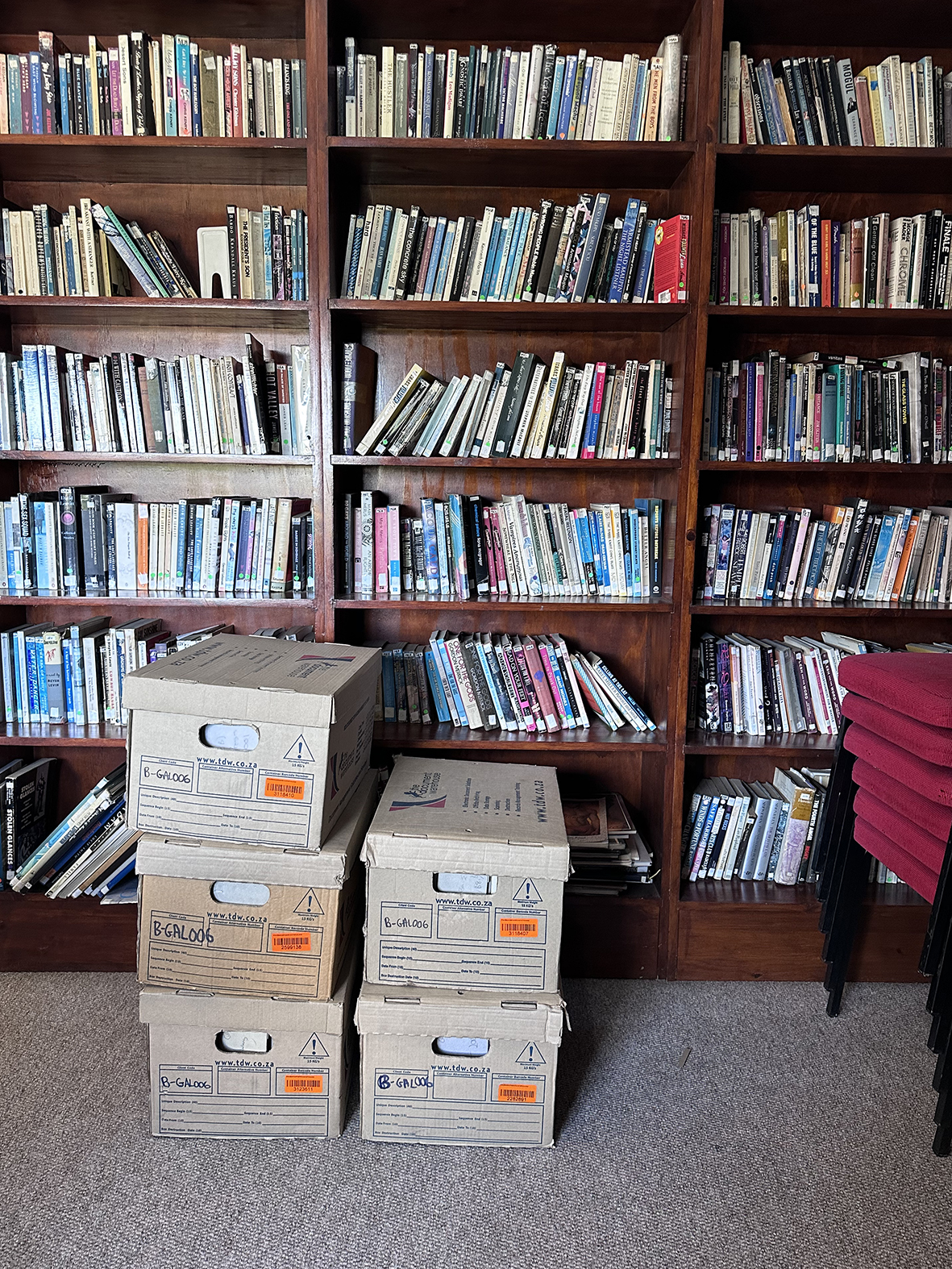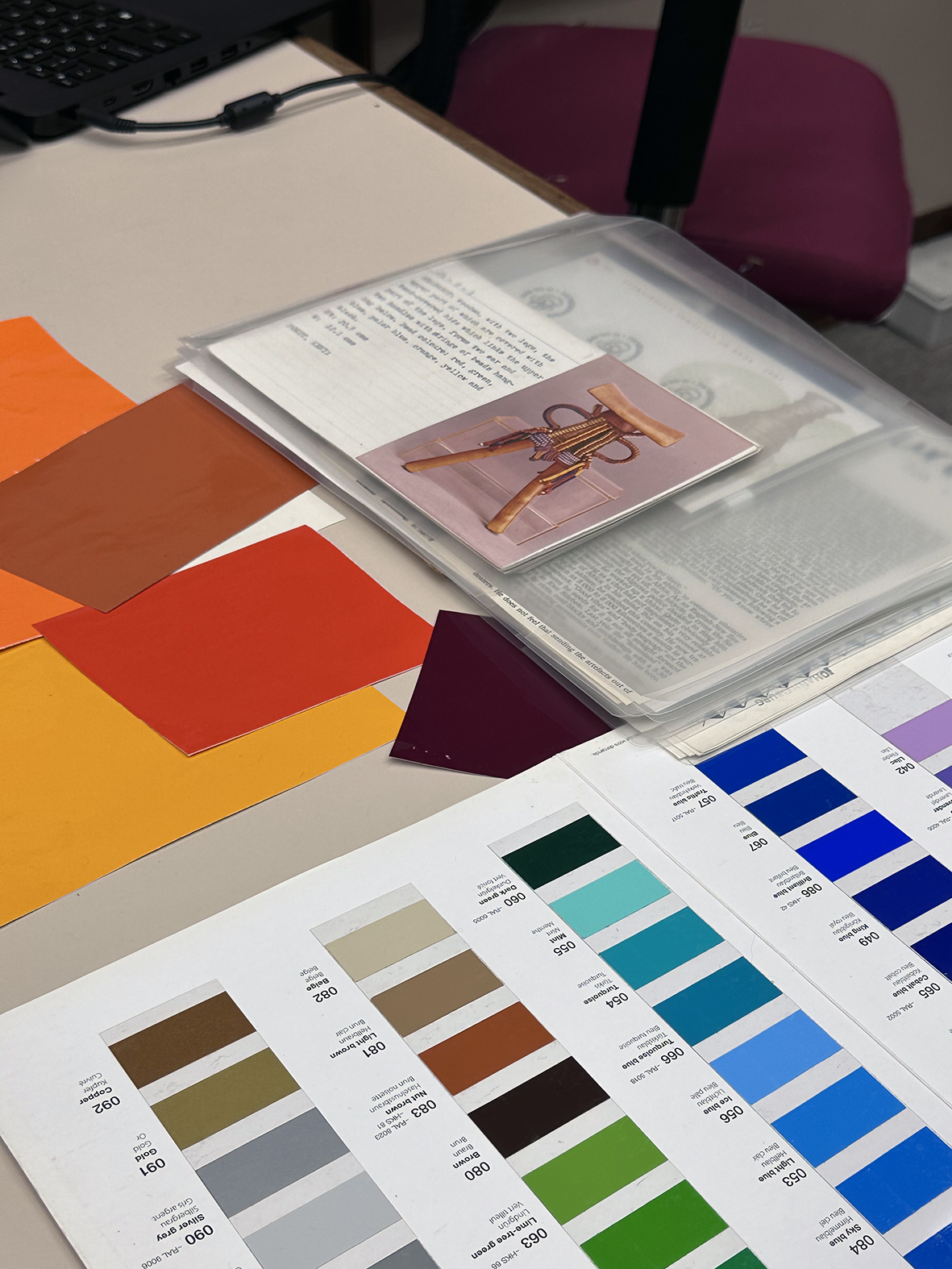Swiss artist and researcher Camille Kaiser recently completed a 3-month research residency supported by Pro Helvetia. From Studio Grey in Johannesburg in January 2024 and March 2024 to participating in the Iqoqo program in Cape Town in February 2024, Camille’s work aligns with archive exploration and fictional storytelling to communicate a personal perspective on history that is contemporarily appropriate. Kaiser shares her thoughts on the use of archive aesthetics, fiction and emotion in her past and ongoing practice to understand historical narratives and their inherent societal impact.

Ruvesen Naidoo: To kickstart our interview, please describe your research residency in South Africa in a few words.
Camille Kaiser: Archive aesthetics, archive politics and connection.
RN: How does your exploration of archive aesthetics in your research projects encourage us to reconsider the ways in which historical narratives are constructed.
CK: It’s about looking into the past to uncover the unexpected. There’s a misconception that archives reveal a concrete idea of truth or history. However, I believe that the purpose of using archives today is not merely to demonstrate what happened, but rather to consider how these documents can help us understand the present or provoke contemporary thoughts.
RN: In what way does the incorporation of fiction in your projects concerning historical events disrupt conventional concepts of historical authenticity?
CK: I think it is because I always find myself trying to understand historical events or something from the past that I am connected to or feel connected to. Using fiction is also a way to convey where I am not. I am not a historian, and I am not trying to tell history. I find it more interesting to tell stories that I am connected to in the present but with a look into the past. So, I think fiction is a strategy to fill silences or to navigate notions of history that will never be full, objective, or fixed, and there will always be movement.
RN: In terms of your previous work, How do your installations and films about colonial monument dismantling in Algeria make viewers rethink power dynamics in memorialisation?
CK: Monuments are typically constructed to endure, not to be taken down or relocated. Under the colonial occupation of Algeria, it was believed by French colonisers that their monuments would stand indefinitely, yet they were ultimately removed. I am interested by artworks that were thought of as permanent fixtures but were moved to different locations and eras, acquiring new meanings for different communities and places – and leaving a whole space behind them for new thoughts and artworks to emerge


RN: What approach do you use to manage ethical concerns in your research involving documents from diverse countries?
CK: One of the approaches that I continue going back to is speaking in the first person, situating the “I” that is doing the research. Where am I working from and why? What access do I have to these documents in this space and time? How can I implement the politics and challenges of doing the research/being the researcher in the research itself?
RN:How do you demonstrate the interconnectedness of colonial histories through archival material and their lasting impact on contemporary societies?
CK: Most documents that I work with were made/produced in a context of colonial occupation or the following period of transition – but I feel I have a personal connection to them because of when/where they were produced or what they discuss. Working with them today, I wish to understand how they shape the contemporary experience of, for example, looking at art in a museum, navigating urban space, etc. Fiction is a strategy to speak of this interconnectedness as my characters are always situated in contemporary societies.
RN: In what ways did your engagement with South Africa’s artistic scene, during your residency, enrich your understanding of colonial legacy?
CK: The colonial legacy in SA is plural and complex – engaging with a different scene and environment where these questions are perceived, discussed and treated in their own unique ways is always an opportunity to rethink/reposition my own artistic strategies and thought processes in a context such as Switzerland, where these legacies are still too little discussed.
RN: How does a focus on personal narratives disrupt conventional colonial history narratives?
CK: Already, to come into our museum today in Switzerland and say, ‘I, a Swiss artist, feel connected to colonial history, and this is why,’ speaking from a personal perspective, is already disruptive”.


RN: What role does empathy play in your approach to portraying historical events through fictional storytelling? How does this approach help viewers develop a stronger bond with the subject?
CK:Navigating the complexities of empathy is tricky, I believe. It’s like… it’s like something significant, especially if you come from a mixed background. That blend already offers a unique perspective on the past. Personally, I’m not interested in moralising or excessively empathising, nor do I delve into feelings in my work. Instead, I write about navigating archives today and the inherent tension that accompanies it. This tension may stem from empathy, anger, or misunderstanding. Such tension is crucial to my work, as it shows its deeper meaning.
During her residency in South Africa, Camille Kaiser also led the production of her film “Fatigue d’archives”. “Fatigue d’archives” delves into the illegal exfiltration and subsequent return of European art from the Musée national des Beaux-Arts in Algiers to the Louvre in Paris. The research and images were made during a residency in 2023 at the Cité internationale des arts in Paris.
Illustrated as a semi-fictional dialogue within a museum archive, the project focuses on the stillness and strain in grappling with colonial history.
Collaborating with Johannesburg-based artists Zamani Xolo for scoring and Paul Shiakallis for grading, the project employed innovative editing techniques and sound design to construct a narrative around the research process, portraying the museum as a political space and the archive centre as a site of tension.



This story is produced in the context of an editorial residency supported by Pro Helvetia Johannesburg, the Swiss Arts Council.



















































